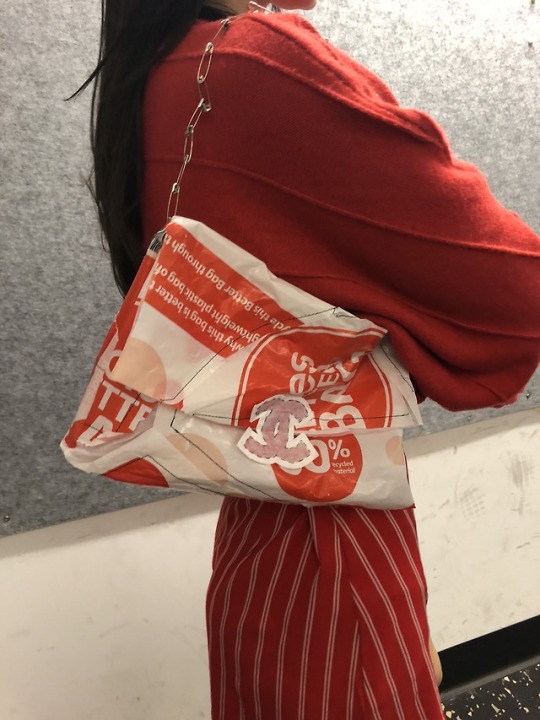#assessmentTwo
Photo




Blog #1: Group Formation & Story Development
Introduction
Hello,
Welcome to my blog ‘Reflect Creatively’. My name is James Wetherall, and I am currently in my first year of Communication at The University of Newcastle. This blog is about the process and development of a short movie that I am making as part of an assessment for the subject ‘Creative Collaborations’ in conjunction with two of my classmates, Nathan and Aden.
Primitive Beginnings
In our tutorial class last Tuesday, we were split into groups for our ‘short movie’ group assessment. I was put with Nathan & Aden. We all decided on different filmmaking roles; me as the director/screenwriter, Nathan as the art director/sound desginer, and Aden as the cinematographer/editor, however these are only provisional as we expect more people to join us.
We gathered to formulate ideas for our story. I developed the idea of someone faliing into a dream and suddenly he sees drama everywhere he looks, including explosions, aliens, and protests. I guess the inspiration for this came from the kids television show ‘Arthur’, because every episode contains a wacky dream from a certain character, and ‘World War Z’, because it is about a zombie apocalypse.
Nathan developed two ideas, one of which was ‘Vampire Speed Dating’ (I forgot what the other one was). I decided we should combine these ideas together, so the story was about someone who fell into a dream and suddenly, he was a vampire looking for a date; a combination of romance and horror. Although Aden did not develop a concrete idea for our film (as far as I can remember), he added valuable input into how Nathan and I’s ideas could be tweaked and implemented.
Despite the combination of these ideas, there was a lot of silence in our group. I spent a long time trying to formulate new ideas for this story, but whatever ideas I developed I didn’t share because I was unsure if it would fit into the storyline. This meant that there was not much further development of the story. Nathan spoke up and added a few more details, but apart from that, there was no addition of great significance.
Conclusion
The first group meeting was more about what roles would be assigned to each person rather than a rough developement of the story. This was discussed prominently among us as we worked out our strengths and weaknesses in different areas of filmmaking. I would like to see constant communcation about our ideas between us as we continue to meet together throughout the semester.

References
Explore Business Ideas. (2020, April 9). [Photograph of man looking at ideas on a noticeboard] https://www.bloomdocking.com/blog/How-to-Brainstorm-Business-Ideas-for-Your-Online-Business
IndigoStars ASMR (2015, February 27). [YouTube thumbnail of smiling vampires in close-up view]. https://www.youtube.com/watch?v=i1i21iATCBQ
PeopleImages (n.d.). Person sleeping on his bed with his hands under his head [Stock image]. Getty Images. https://www.gettyimages.com.au/photos/black-man-sleeping?phrase=black%20man%20sleeping&sort=mostpopular
Rosenbaum, R. (2016, March 27). [Photograph of people reading movie scripts at a table]. https://www.stage32.com/lounge/screenwriting/Table-Reads-2
Thompson, B. (2018, May 31). [Photograph of notepad, pencil, film strips, and clapperboard]. https://www.actionvfx.com/blog/how-to-successfully-plan-out-your-film-project-part-one
2 notes
·
View notes
Text
Assessment Two Group Piece
Video link to final work of Charles, Nancy, Jasmin and Jessie.
4 notes
·
View notes
Photo

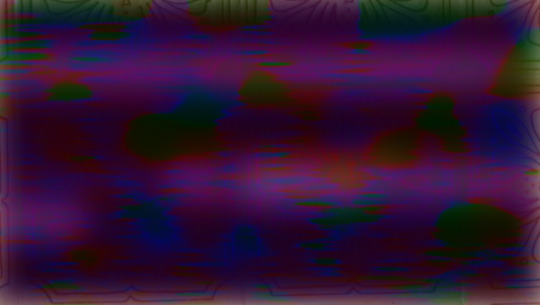


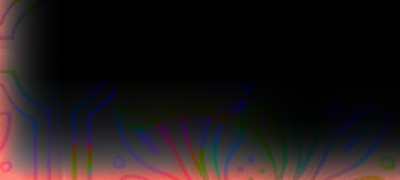
experiment two
(stills)
Playing around with hue, glitch and variations of blur, results from this so far have been unexpected! Part of my aim was to disassociate bad connotations of glitch, and in making it look visually aesthetic with different RGB combination and letting the glitch do its own movements for now, has made it look like unique still images of paintings OR wallpaper!
As a matter of fact, I don’t quite know where this is heading yet, although I do plan on putting a background (abstract) soundtrack to make each glitch movement become alive in the moment (?)
For now, these stills are giving me a modern-vintage feel! It’s colours still resemble the neon green/purple/blue/red that is typical of a digital glitch, whilst turning up the red on the original footage has made each frame look like an old photograph that has begun to brown in its edges..
It could also have just created cool moving patterns!
1 note
·
View note
Text
Assessment Two - Body of Work, Concept Statement, Bibliography
BODY OF WORK
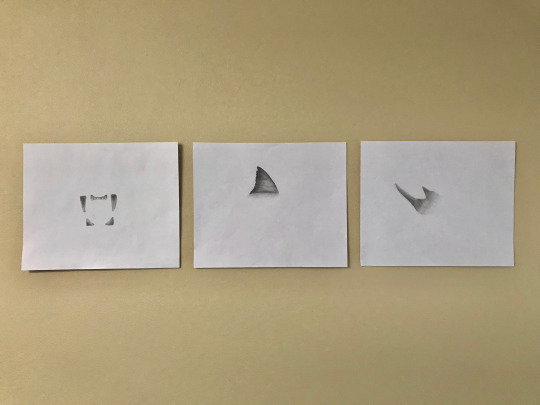

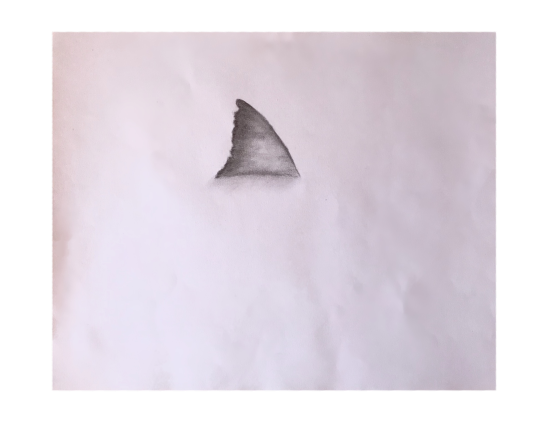
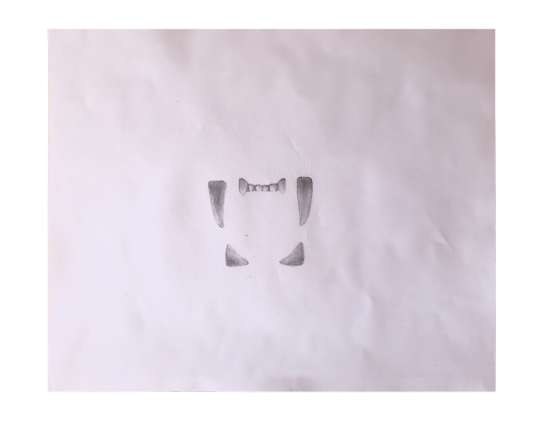
CONCEPT STATEMENT
Contemporary art and design often looks at the idea of constructed binaries, such as man/woman, soft/hard, straight/gay, dirty/clean, organic/synthetic. Considering the history of these ‘pairs’, how can art and design interrogate these binaries and offers new insights?
The oeuvre of many contemporary artists derives from a desire to comment on issues central to the anthropomorphic community. These works often express an artist’s notion of wrong and right; the constructed binary humans use to distinguish between what rituals, behaviours and actions we morally accept and which we reject. In expressing what’s ‘right’ in an artwork, an artist also implicitly - or explicitly - denotes what is ‘wrong’, or vise versa. What occurs here, is the positioning of artist into a master-role whereby their understanding of the right and wrong binary is distinguished above that of the audience. Firstly, through the physical - the oeuvre - the artist is given a more dynamic and dominant platform for expression, therein privileging their viewpoint. Secondly, implicit in the position of audience, is a role of reaction and response - the engagement is directed first and foremost by the artist. This notion of privileging one, or a collective perspective, on wrong or right is reflected in quotidian life - social trends, governing parties, legal systems etc. The small-scale body of work presented attempts to subvert this distinctive binary of wrong and right, and instead privilege the notion of individualistic values and principles, comparable to a levelled spectrum rather than a two fold complex.
To offer this insight into the binary of right and wrong, this artwork requires a case study depicted in such a manner, both in the body of work and in the statement, that positions me as the artist and my respective audience on a platform of equal authority. A global practice which manifests in different ways and which serves as the case study to inform this body of work, is the commodification of an animal’s singular or few body parts, achieved through hunting and/or poaching. For example, the practice of shark finning in China, whereby a shark’s fin is severed from the body by fishermen to be traded at the marketplace, or sold in a restaurant in shark fin soup as a cultural delicacy, entails the commodification of the shark fin - the rest of the body is typically discarded back into the ocean by fishermen so as to avoid declaring the full animal at port. Other body parts delineated in this body of work include the rhinoceros horn, the object of a pervading trade in predominantly South Africa, and the tiger’s teeth, sold as an item of status or of traditional medicines in Asia - other parts of a tiger are singularly sold on the black market too.
The composition of the artwork is so that an artistic inflection of opinion is not discernable. The three white pieces of sketch paper provide a neutral background upon which to draw. Drawn on each page is a singular body part, sans the whole body or a distinctive setting. In not emphasising these, I inhibit the contextualisation of my personal opinion and belief regarding the case study. Each body part is depicted in grey-scale. This is due to the innate effect of colour on psychological and emotive responses. Overall, a space of levelled engagement is fostered, whereby artist and audience both have the same capacity for realising and expressing one’s opinion. The audience is allowed to react and respond freely, and aren’t confined to any interpretative trajectory given through artistic direction. Engagement with the work is enhanced by this degree of artistic neutralism, and from the need for the audience to visualise further. Artistic neutralism enhances the engagement with the drawings because the audience has to visualise further and consider all aspects of the objectively outline case study. One audience member may be attracted to the shark fin as a mark of holistic culture while another may perceive the initial act of severing the shark’s fin as ecologically detrimental. Another may consider the culture in and among the fishing industry.
The range of possibilities derived from this body of work is what fosters the aforementioned spectrum of individualistic values, ethics and principles.
BIBLIOGRAPHY
Christy, B. (2016, October). Special Investigation: Inside the Deadly Rhino Horn Trade. Retrieved from National Geographic: https://www.nationalgeographic.com/magazine/2016/10/dark-world-of-the-rhino-horn-trade/
Elephant Action League. (n.d.). FLASH UPDATE FROM THE FIELD: CHINESE STILL DEMANDING TIGER TEETH, PRICES STILL HIGH. Retrieved from Elephant Action League: https://elephantleague.org/china-tiger-teeth/
Fairclough, C. (2013, August). Shark Finning: Sharks Turned Prey. Retrieved from Ocean Find Your Blue: https://ocean.si.edu/ocean-life/sharks-rays/shark-finning-sharks-turned-prey
Fieldstadt, E. (2015, July 17). Wildlife Poaching: 4 Reasons Why You Should Care About the Issue. Retrieved September 13, 2018, from NBC News: https://www.nbcnews.com/news/africa/wildlife-poaching-brings-unimaginable-consequences-n391976
Fisher, A. (2018, June 1). As Tigers Become Rarer, Poachers Are Targeting Lions. Retrieved from National Geographic: https://news.nationalgeographic.com/2018/06/wildlife-watch-illegal-trade-lions-teeth-claws-poaching/
Guynup, S. (2014, February 12). Illegal Tiger Trade: Why Tigers Are Walking Gold. Retrieved from National Geographic: https://blog.nationalgeographic.org/2014/02/12/illegal-tiger-trade-why-tigers-are-walking-gold/
Khadka, N. S. (2017, July 18). Lion parts 'sold as fake tiger products' in Asia. Retrieved from BBC News: https://www.bbc.com/news/world-africa-40643533
National Geographic. (2013, March 1). 100 Million Sharks Killed Every Year, Study Shows On Eve of International Conference on Shark Protection. Retrieved from National Geographic: https://www.nationalgeographic.com/people-and-culture/onward/2013/03/01/100-million-sharks-killed-every-year-study-shows-on-eve-of-international-conference-on-shark-protection/
Pleasant, A. (2017, December 6). Artists as Activists: Pursuing Social Justice. Retrieved from Huffington Post: https://www.huffingtonpost.com/amy-pleasant/artists-as-activists-purs_b_11783614.html
Rigoulet, J. (2017, April 21). Why is the Illicit Rhino Horn Trade Escalating? Retrieved from The Conversation: https://theconversation.com/why-is-the-illicit-rhino-horn-trade-escalating-76265
Worm, B., Davis, B., Kettemer, L., A, W.-P. C., Chapman, D., Heithaus, M. R., . . . Gruber, S. H. (2013). Global Catches, Exploitation Rates, and Rebuilding Options for Sharks. Marine Policy, 194-204.
0 notes
Text
Task 2 Reflection
We have chosen to react to Jonathan Meese’s artwork Agamemnon's Hähnchenbesteck, presented in a documentary in which he portrays his artistic process that was featured in the ���Experimentation’ weekly concept. The strong movements, energy and contrasting colours of the work inspired our collaborative response. In this documentary, he explains how art directs you, how when he paints it is like a dance and that when he is in his studio; art is the master of him. He also explains that he is constantly in movement, “The painting screams at you and tells you to do a little more red here a little more blue there” (Meese, 2012). He experiments with different materials, methods, and ideas and engages with the work he has produced, talking to his paintings and reacting to what they tell him to do. Experimentation is primarily about the process of creation. We were inspired by the interactive process that Jonathan Meese does to create his work Agamemnon's Hähnchenbesteck and emulated his idea of constantly moving during our final work.
We constructed a time-based experimental performance of movements; our own spontaneous dance where we create an abstract painting while reacting to music. We also created an expressive video to be projected over our bodies moving and the canvas as stimuli for the performers. Music is an art form that is influencing and directing our experimental art piece, with different styles/genres allowing us to experiment with different textures, sounds, and tempos. Concluding with a classical, for instance, allowing us to reflect and refine on our painting as the dancers communicate what has become our final multimedia time-based work.
References
for statement:
The story of Jonathan Meese, 2012, documentary, Louisiana Channel, Berlin, accessed 10 April 2018, <http://channel.louisiana.dk/video/the-story-of-jonathan-meese>.
for artwork:
Videos were sourced from https://coverr.co/, https://www.pexels.com/, and https://pixabay.com/ which all allowed use of videos for non-commercial use and without attribution. These videos are licensed under the Creatives Common license.
Debussy, Reverie , Eugène Fromont accessed 10 april 2018, <https://www.youtube.com/watch?v=-SrvreW-E80>.
Florence and the Machine, Seven Devils, Island Records, accessed 10 April 2018, <https://www.youtube.com/watch?v=vIFQt_5qiAE>.
Li, L 2014, Chinese scroll painting H533, Australian Museum, accessed 20 February 2016, <https://australianmuseum.net.au/chinese-scroll-painting-h533>.
Smith, Jorja 2017, On My Mind, FAMM Records, accessed 10 April 2018, <https://www.youtube.com/watch?v=PA5uuBCtZ5k>.
Tape Five, 2010, Pantaloons, Tonight Josephine Records, accessed 10 April 2018, <https://www.youtube.com/watch?v=kgxpdm4YUcc>.
0 notes
Text
Understanding Media Art Assessment two ‘The Private Block’
Exploring the modes of privacy specific to the home and home desktop, how both interrelate through personalisation that is governed by fear and surveillance.
I chose to create a visual map and digital images that invite the audience into the realms which we spend most of our time; the home and online.
Traditional definition of private life prioritises individual goals and personalised relationships and public life revolves around intimate and familial relationships as well as actions fulfilled to benefit others instead of self (Rawlins,1998, p. 370).
Inspired by Garry Trinh and Jason Rhoades 1998 I aim to merge the digital and physical private lives of individual homes to question the legitimacy of privacy in contemporary society. Furthermore, presenting how modes of privacy are customised by us but governed and controlled through the state and online agency (Norton, consumer goods). This control is contextualised through social movement theory and capitalism reminding us that the household is performed.
By creating virtual mapping of the premise of the home including its exterior, front and backyard the audience becomes an invisible third party to private life explained through data and objects. I really want to express the household as a threshold where privacy and public spheres operate together within the household but not necessarily together outside of it. I enabled sound to trigger the cross overs between the two concepts that categorise the way we manage data and interpret objects.
In addition, certain information on your computer or phone is public, I situate this information outside of the home in the front yard or drive way. The public data isn’t necessarily seen by everyone, doesn’t mean it’s not there so I wanted to visualise this in a framework that is publically familiar, that could contextualise a part of society that we live in; a suburban household.
I visualise this work as outside of a gallery, where audiences actively travel to suburban houses that are adopting the concept of the work temporarily. I intend to make the audience an alien in familiar and known realms, a work that is discovered and enabled by technology. You will not be able to view the concept without the VR equipment, this reinstates the transparency of surrounding information living within and outside private homes. Every house and its contents are different, varying spacial design of the home and the data showcased. However, data will be categorised to be situated either inside or outside of the home, and traces of information will be displayed vertically, much like folders within folders are directed.
References:
• Rawlins, W. 1998. Theorizing Public and Private Domains and Practices of Communication: Introductory Concerns. Communication theory, vol. 8, no. 4, 369-380.
0 notes
Text
Bibliography
Geere, D. (2010). Glitch art created by ‘databending’. Wired. Retrieved September 4, from http://www.wired.co.uk/article/glitch-art-databending
Wong, G. (2013). It’s not a bug, it’s a feature: the rise of glitch art. The Guardian. Retrieved September 4, from https://www.theguardian.com/artanddesign/2013/oct/25/rise-of-glitch-art
Klee, M. (2015). The long, twisted history of glitch art. The Kernal. Retrieved September 11, from http://kernelmag.dailydot.com/issue-sections/features-issue-sections/12265/glitch-art-history/
Roy, M. (2014). Glitch it good: understanding the glitch art movement. The Periphery. Retrieved September 11, from http://www.theperipherymag.com/on-the-arts-glitch-it-good/
Emory, S. (2014). A wild glitch appeared! These 8 artists are bringing glitch art into the real world. Creators. Retrieved September 11, from https://creators.vice.com/en_au/article/gvwv7y/8-artists-are-bringing-glitch-art-into-the-real-world
Adams, K, B. (2014). Flickr. Retrieved September 12, from https://www.flickr.com/photos/schtumple/
0 notes
Text
Working on Assessment 2
Today our group met up and completed our assessment two work. We all had prepared a poem inspired by Gertrude Stein’s work that revolved around the idea of a ‘Valentine’. These poems like hers concentrated on the idea of pure experience and conveying these images/projections/views to an audience.
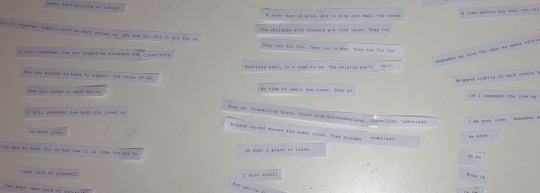
Image Above- the cut out lines ready for shuffling and using
We then created physical forms of these poems by printing and cut them up into individual lines and began recording our process of compiling these poems together. We randomly created verses with a heading from each of our poems and sticking randomly selected lines on a piece of paper. These segments of poem sounded really cool, we loved how random and vague the ‘story’ or ‘flow’ had become, and yet we could all envision a meaning from the lines.

Above Image - the first verse or our poem
We continued this process with all the lines and created a full poem that reflected our interpretation of Gertrude Stein’s work very well. We extracted all the footage of this process and started to work this into a video that would provide some visual representation of the poem, as a way to ensure interest in the final work (as listening to the poem as we did in class could be boring and hard to keep up). We then used ZOOM H4N audio recording device with a microphone and recorded Nancy reciting our poem as her voice was the closest to Stein’s and sounded lovely when reading.
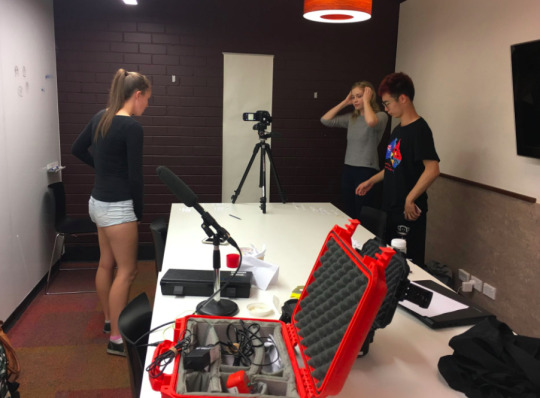
Image Above - showing all our loaned equipment from the resource centre. Nancy and I enjoyed learning about the new things we could use.
We then considered not including a visual to go along with the audio, as we lied how the poem was presented just as a recording, like we heard in class. However we then figured this may have been our own bias and we were just very proud of our work, and the audio still could have bored some when presenting. We wanted to convey the visuals along side the audio, we began editing these together.
We played with speed and filters and liked using an ‘old time’ filter and typewriter text to recreate and extend the work of Stein in 1922. The finished work is not quite 5 minutes long, but we feel is effective and any added visuals to extend this would distract from the meaning of the poem.
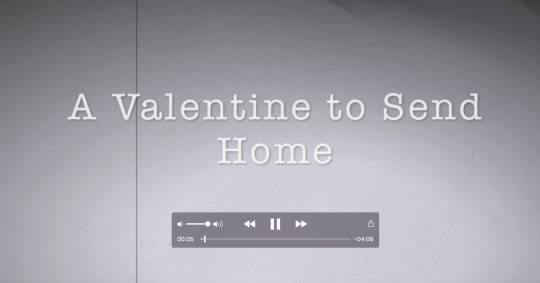
Above Image - screenshot of edited footage
Over 5 hours today we developed our individual research and understanding of Stein’s work and created a piece of work that we feel is very fitting to pay honours to the vague artist, and conveys a story (of sorts) about each of our own Valentine’s combined together.
4 notes
·
View notes
Text
Rationale
Continuing and building on research conducted in the previous task, my project also answers the same question: “Art and design often explore relationships between humans and non-humans, the environment and ecology”. “How can contemporary art and design propose new possibilities for imagining the ‘human’ and the environment?. Through engaging with a number of class topics, through research and through a process of experimentation I was able to develop and create my final design and present my own possibility for imagining the human and the non-human and its environment.
As explained in my last assignment, wastage statistics show that we as a society disregard longevity, deeming objects easily replaceable and of little importance to our own lives. These object however, have an alarming and significant impact on the environment, altering and harming the often fragile relationships and symbiotic nature of the environment and its ecology.
Class discussion allowed me to understand how practice-led research can be extremely beneficial to my design process, allowing me to understand and decode what the question was asking and how I could research appropriately. This led me to break up my research into two different sections – the issue and the response.
Fast fashion as a process and a mindset is something I find both interesting and alarming. Trends are designed and manufactured quickly and inexpensively to allow mainstream consumers to buy current clothing styles at a lower price. Thriving on constant change and the frequent availability of new products, more and more textiles are being discarded every year. Clothes are being disposed after only being worn a few times, and often are not considered as having the inherent quality to be considered vintage or worth keeping. Made from man-made synthetic and manufactured materials, these low-quality goods can only end up as waste, and are difficult to recycle.
Another concept that I have drawn heavily on in my design process is value. In class, we examined its complexities, how we judge value, and different systems of value. Defined as the regard that something is held to deserve; the importance, and it’s worth or usefulness of something - value is placed on everything within our daily lives. The topic of value and its analysis is very relevant to both my research and my chosen concept and final design. As a society that disregards longevity, especially with our clothes (as seen in the development of fast-fashion) - we see how people perceive and acknowledge value.
Inspired by Giorgio Armani's Autumn/Winter 2015 Ready-to-wear show, Margaux Roy’s photography, Altuzarra’s Fall/Winter ready-to-wear 2014 collection and Josh Blackwell, my bag design is made from recycled plastic bags. As stated by Josh Blackwell, plastic bags have a “ubiquitous presence and degraded status”, they are quickly used then discarded, and in high abundance. Like Blackwell, I attempt to “redress their impoverished status” through recreating them into something people may perceive to be of value.
My experiments draw on this idea. The first experiment, I looked at altering the value or perceived worth of a product by ‘adding value’ through the addition of embroidery. Through this simple act, the item could be seen as something unique and be appreciated. My second experiment built off this idea – by photoshopping plastic bags of varying sorts onto people and streetstyle images, the bags can be considered something desirable, something ‘on-trend’ and worth ‘buying into’ – a habit many of us do within our own lives.
These experiments and my research both led me to my final design. Made from plastic bags, my project is a replica classic Chanel bag. As a luxury brand, Chanel are regarded globally as having a high value. Hand cut, hand-stitched and made to last, these bags are made with luxury, expensive materials. However my bag is also stitched by hand, carefully cut and sewn and made to last – with its only differentiating factor being that is made of recycled materials, materials disregarded and thrown away. Featuring the signature logo and a safety-pin chain handle, by bag serves as a statement as to how items that we disregard and consider trash or waste, can be re-used and serve another purpose, seen as something that could be considered valued.
If we can change our mindsets in regard to value, as something that may not be the most expensive, but rather seeing value in an items practicality and its reduced harm on the environment and in addition, continue to explore and develop future possibilities for recycling, sustainable practice and technologies, we can limit the harmful relationship humans have on the environment and ecology.
References: Research
Wikipedia, the free encyclopedia, https://en.wikipedia.org/wiki/Fast_fashion
BBC News, July 2018, ‘Fast Fashion: Inside the fight to end the silence on waste’, By Kelly-Leigh Cooper, https://www.bbc.com/news/world-44968561
‘What is Fast Fashion?”, August 2018 ,The Big Picture, By Solene Rauturier, https://goodonyou.eco/what-is-fast-fashion/
‘Fast fashion quick to cause environmental havoc”, Recycling Waste Minimisation, The University of Queensland, March, 2018, https://sustainability.uq.edu.au/projects/recycling-and-waste-minimisation/fast-fashion-quick-cause-environmental-havoc
The Express Tribune, July 7 2018, “Fashion goes green with emerging designers using recyclable materials for garments, https://tribune.com.pk/story/1752055/4-fashion-goes-green-emerging-designers-using-recyclable-materials-garments/
The Independent, May 27 2016, “How the Fashion Industry Is Helping The World’s Fashion Problem”, by Alexanda Sims, https://www.independent.co.uk/life-style/fashion/how-the-fashion-industry-is-helping-the-worlds-rubbish-problem-a7052826.html
References: Images
http://www.joshblackwell.com/
https://www.vogue.com/fashion-shows/fall-2014-ready-to-wear/altuzarra
https://www.itsnicethat.com/articles/photography-margaux-roy
https://www.vogue.com/fashion-shows/fall-2015-ready-to-wear/giorgio-armani
0 notes
Photo
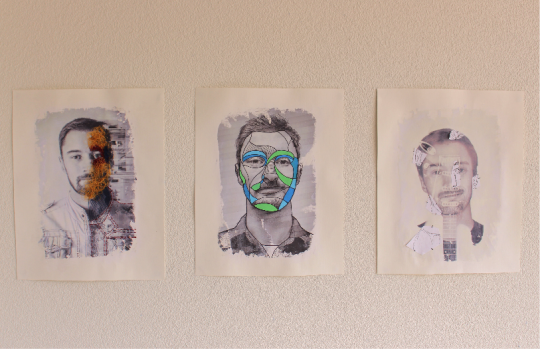

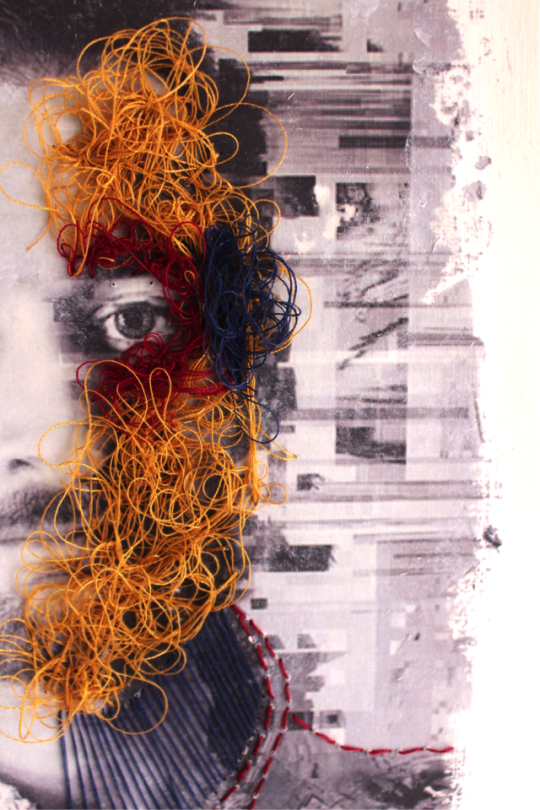
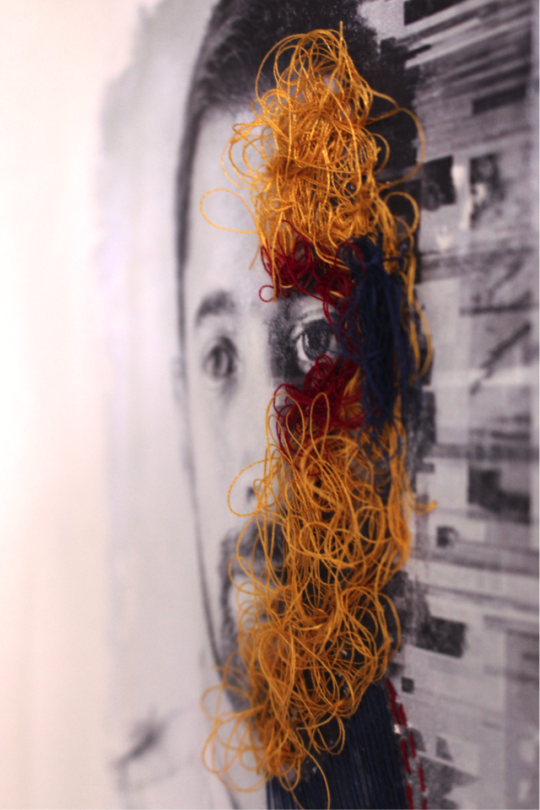
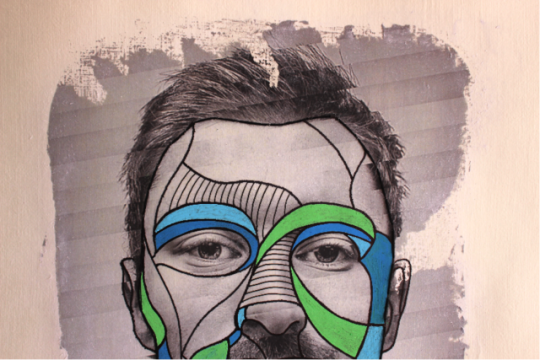
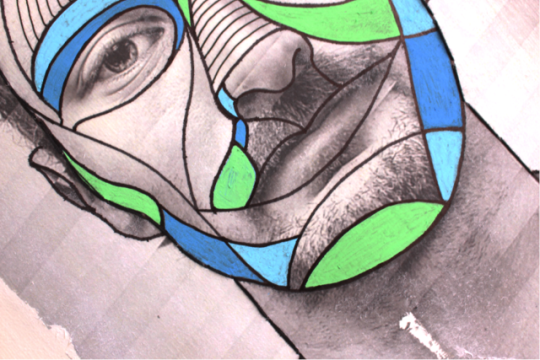
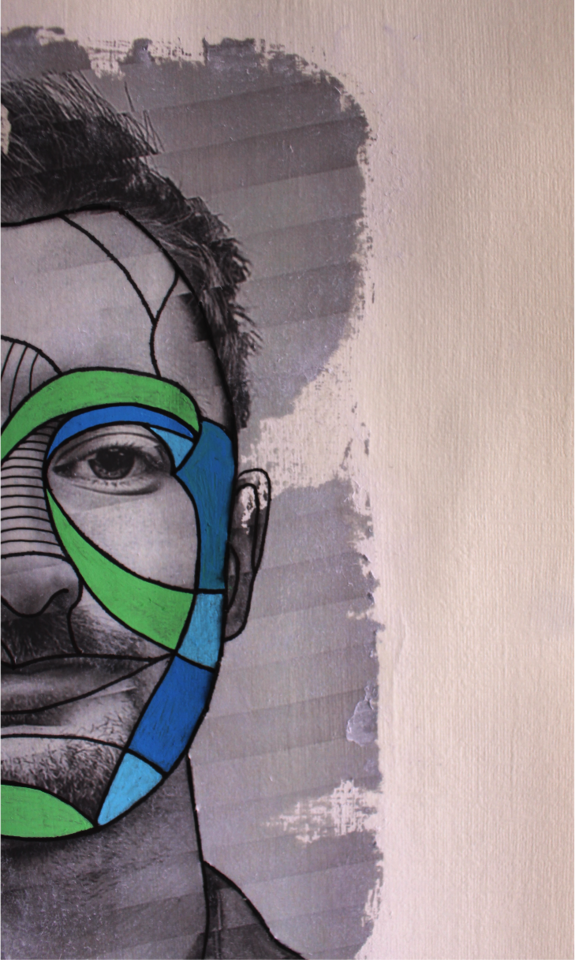

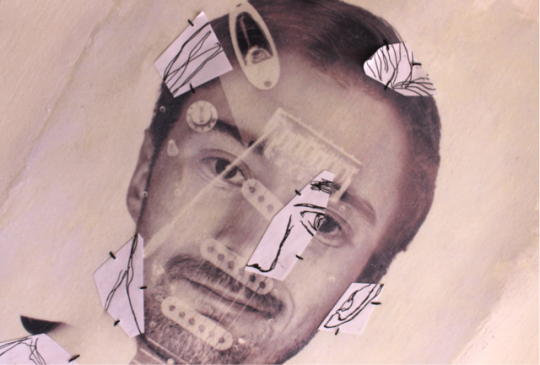
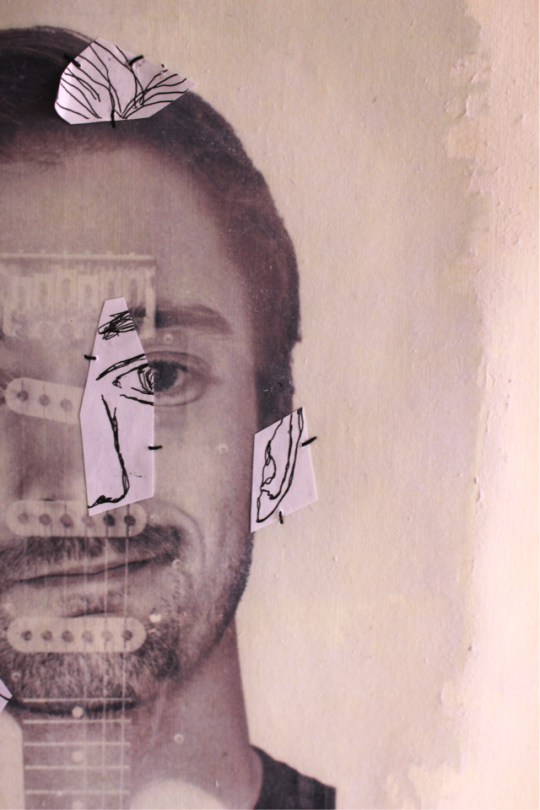
Assessment Two - FINAL WORK & CONCEPT STATEMENT
My work explores the creative possibilities of glitch, inspired by the beginning of the glitch art movement, a time when many were afraid of the growing presence of technology and how much they controlled us. Alongside, I was also motivated by media artist Nick Briz who proclaims that, “glitch art then, is anytime an artist intentionally leverages that moment, by either recontextualising or provoking glitches.”
My concept consists of the idea that by carrying out planning and thought into production of a work, provides a more intriguing and broader possibility of results, compared to a computer generated image. Continuing from assessment one, I also discuss the advantages of manually editing images that allows more control and flexibility for the artist.
For this assessment, I plan to further explore my idea by attempting to restore the systematic ‘fails’ or ‘accidents’ that are out there in the world.
I started off by using a digital method in restoring the distortion of glitch, hoping to explore even greater possibilities of glitch if the artist were to take control over technology. I then began to experiment using Adobe Photoshop, and collected one of the sample pages from glitch artist Rosa Menkman’s PDF ‘Vernacular of File Formats’. The deprivation of colour within the work, gave me the idea to restore some of it’s colouration, which I was able to achieve by photoshopping translucent shapes around the face. However, I ended up flustered during the process and unsatisfied with my results due to my lack of experience with the app. The concept of my work revolves around the artist’s control, yet I felt extremely limited with my choice of artistic practice.
I was more confident working with hands on methods, and turned back to drawing mediums and mixed media for my third experiment. I utilised my poster from assessment one as a ‘glitch work’ and pursued to explore practices that relate to restoration such as ‘patching’ or ‘filling in’. Which I then began to stitch and used markers and paint to patch up the the fragmented or undefined areas.
Once again with the motivation of restoring the ‘accidents’ of technology, I researched existing glitch artworks and chose three glitch self portraits by the photographer Ben K Adams. To start off, I ink transferred the three images onto oil sketch paper, to further emphasises the blur of glitch and be able to work on a thicker sheet before I attempt to restore the image.
The first portrait, I studied the areas that were glitched and began to stitch the artist’s clothes that were unclear, around the neck that were cut and deliberately over-stitched the areas around the face. Initially, I planned to restore the images entirely back to it’s original state. Although throughout my experiments, I decided to let go of my original intentions and be freer with my practice, in order to allow myself to really explore a broader possibility.
By looking at the type of glitch within each different portrait, gives an idea on the starting point. Within the second portrait, the glitch minimised the facial structure of the artist, which I then stitched an outline of artist’s form and used ink and markers to highlight the facial features.
Within my last and third portrait, the glitch that was placed over and shadowed the artist, encouraged me to re-enhance the hidden features of the artist. I used line drawing to trace the areas that were unclear and used stitching once again to ‘patch’ up the collages onto the image.
By restoring the ‘mistakes’ of technology, my final work consisted of works that were neither ‘glitch’ or ‘non-glitch’, yet they were still produced from previous existing glitch artworks. Through this artistic practice of restoring ‘glitch’ and the encouraging of the artist’s control and process, allowed myself to really explore freely and broadly on the creative possibility of glitch.
0 notes
Text
Concept Statement
At the beginning of my research for Assessment One, I became fixated on the environmental theme of the first question.
Having moved from the country, my current environment is having a profound effect on my art-making and my persona as a whole. I’m constantly surrounded by people and I am subsequently more aware of the byproducts of condensed human colonisation. How is it that, with a population of 4.2 million people in Sydney alone, we are not wallowing in our own filth? We are not confronted with colossal pollution and environmental downfall on a day-to-day basis? The answer is that we are - we’re just ignorant and/or oblivious.
In order to further explore manmade/natural relationships, I combined research and visual inspiration with extensive experimentation. This project was initially material focused, and the concept was developed through my experiments.
Initially, my experiments consisted of creating shapes or ‘drawings’ from hot glue, in the form of crumpled water bottles. It had hit a dead end and I was getting bored, when David Attenborough’s The Blue Planet came on television, airing an episode on Creatures of the Deep. After it was over, I downloaded series after series and watched, while creating, bewildered by the vast creatures of this planet - namely: sea urchins, starfish and molluscs.
From the experimentation linked to the first assessment, I knew I wanted to carry on with plastic - a material I hadn’t really worked with before. The choice of plastic as my material was the soul driving force of this project.
In connection to the environment, I wanted to source materials from the world around Plastic, as a result of pollution, can be found relatively anywhere, and with a quick trip to Bondi Beach, I had more than a bag full to play with - soft-drink bottles, food containers, lids.
I went home again and pondered. I wanted my objects so be ambiguous, and ambiguous is hardly the word for an overtly obvious Coca-Cola bottle - wrapper and all. So the questions arose - how do I re-shape the plastic? Do I want to create a sculpture or something flat? How can I best answer the question?
I concluded to melt the found plastics into predominantly unrecognisable blobs, and after that, the process was an excited blur. I sat at my desk with my plastics and hot glue, while watching David Attenborough’s nature documentaries. As I felt inspired, i just ‘did’ - the forms seemed to come together themselves, and I was just their creational tool. At the time, I had no idea what I was doing, as if my brain worked vicariously with my hands but not telling me why - until it came near the end. I connected the dots (that I’d somehow created) and realised what I’d made and what they stood for.
The series manipulates plastic to embody forms likened to sea creatures. I was inspired to create this aesthetic change to pay tribute to the versatility of the environment when, recently, specific rocks made from plastics were officially recognised as geological structures. The ability of the environment to absorb a slow-degrading, man-made material and still prevail to create its own ‘natural’ form - amazed me.
From this, I entitled the collective work, Polymonde - a play on the common plastic pre-fix ‘poly’, meaning ‘many’ and ‘monde’, french for ‘form’.
This series of constructed objects is the visual culmination of ideas around pollution, human ignorance and natural perseverance.
These objects symbolise poignant aspects of modern day pollution - in a literal sense, the materials are genuine pollutants collected locally. Metaphorically, the manipulated natural ‘disguise’ of the plastic forms reflects our ability to overlook trash in our environment, much like ignorance surrounding issues such as pollution and global warming, dominant themes tied to assessment question one.
Artistic References -
1. Ruth Wallen: http://www.ruthwallen.net
2. Aurora Robson: http://www.aurorarobson.com
3. David Attenborough: Sea Life, 2009
0 notes
Text
Process




Images taken during the construction process.
0 notes
